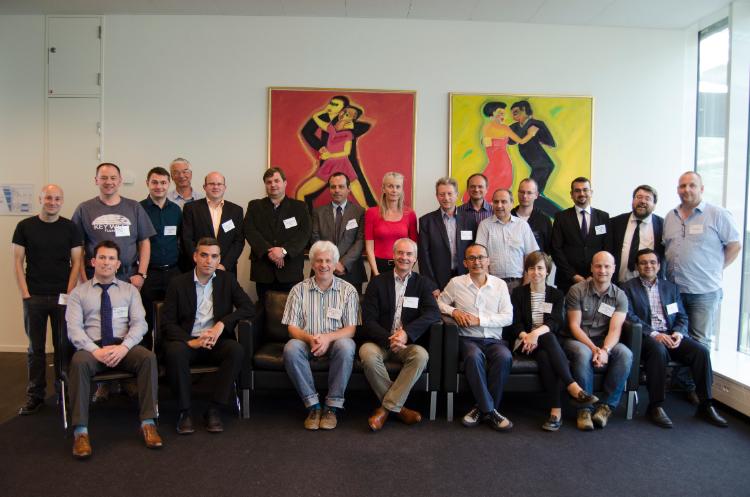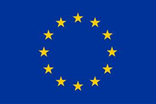2016 News Archive
- NovoGrid Shortlisted
- Intel partners with UCD to sponsor Masters Students
- UCD PhD student wins All-Ireland Energy Thesis in Three Challenge
- Kick-off meeting for the H2020 CELTA ITN 2016
- Laura Tobin featured by Science Foundation Ireland
- UCD engineer receives €1.7m SFI grant
- Analog Devices Ireland Award Presentations
- €6.6m investment for UCD-based medical device company FIRE1
- Prof. Federico Milano elevated to IEEE Fellow
European Integrated Research Training Network (ITN) on Convergence of Electronics & Photonics Technologies for Enabling Terahertz Applications (CELTA)
Tuesday, 26 July, 2016

CELTA members from European research institutes and industrial partners including Professor John T. Sheridan and Doctor James P. Ryle from University College Dublin’s School of Electrical and Electronic Engineering.
Terahertz wavelengths, which have sizes between those of visible light and microwaves, literally allows the user to see through walls and opens the way for safer biomedical imaging. Researchers within the UCD School of Electrical and Electronic Engineering (Professor Tom Brazil and Prof John T. Sheridan) are part of a recently funded EU project with the challenging aim of developing such technologies. The specific goal of the ITN CELTA is to develop technologies and complete sub-systems for sensing, instrumentation, imaging, spectroscopy, and communications utilising the Terahertz spectrum. It is the largest EU Training Network in this area.
CELTA will provide PhD degrees to a group of 15 early-stage researchers (ESRs), educating them with a set of interdisciplinary skills covering photonics, electronics and signal processing that will allow them to create advanced Terahertz systems with emphasis on making them available for commercial applications.
CELTA is coordinated by Professor Idelfonso Tafur Monroy from the Technical University of Denmark (DTU). The 11 beneficiaries in CELTA are leading research groups in the area of Terahertz photonics, Terahertz electronics, algorithms, signal processing, and Sub-Terahertz communications with strong track record of collaboration dating back more than 25 years. CELTA is supported and complemented by 14 partner organisations from industry, including 4 spin-offs from the CELTA consortium.
CELTA contributes to the European Research Area (ERA) by helping to overcome the gap between the fragmented efforts in Europe on electronics and photonics Terahertz by introducing the strategy of converged electronics and photonics co-design in its research programme. CELTA makes a special effort on establishing a common engineering language in its training programme across the electronics, photonics and applications disciplines. We believe this common engineering language and converged co-design is mandatory to make the next logical step towards efficient and innovative solutions that can reach the market.
To push forward its strategy, CELTA will integrate multidisciplinary scientific expertise, complementary skills and experience working in academia and industry, to empower ESRs to work in interdisciplinary teams so that each ESR may integrate his or her activities into one or more of the three demonstrators that will be realised by the end of the project: A Terahertz vector network analyser, an imager, and a beam- steering system.
CELTA is embedded in and contributes to key research, innovation and education areas within the UCD’s School of Electrical and Electronic Engineering.
Detailed information on the CELTA consortium, its research programme and open ESR positions can be found at our website: (opens in a new window)www.celta-itn.eu
Contact Persons in UCD:
Professor (opens in a new window)John T. Sheridan , Professor (opens in a new window)Thomas Brazil
 This project has received funding from the European Union’s Horizon 2020 research and innovation programme under the Marie Sklodowska-Curie Grant Agreement No 675683.
This project has received funding from the European Union’s Horizon 2020 research and innovation programme under the Marie Sklodowska-Curie Grant Agreement No 675683.